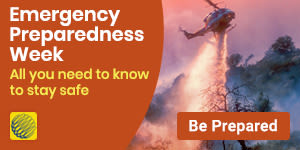Stargazing forecast: See these night-sky sights this summer
Meteorologist/Science Writer
Sunday, July 5, 2015, 1:07 PM - With warmer summer weather giving Canadians a chance to stay out later during the night and venture further away from city lights, here are four special events in the night sky you can enjoy this summer.
July 1 - Conjunction of Venus and Jupiter
Just after sunset on July 1, look off to the western sky and you'll see a spectacularly sight - two of the brightest planets in our sky, Venus and Jupiter, so close that they're almost touching.

Looking west at 9:45 p.m. (local time). Courtesy: Stellarium
The planets themselves are not almost touching, of course. They're millions of kilometres away from one another. They just appear to get closer (and actually cross paths in their journey across our night sky), as Venus races to "catch up" to us as we travel around the Sun, and we recede from slower-moving Jupiter, and the angles we view these planets from change.
These two are already fairly close to one another in the night sky now, but they will grow closer and closer until July 1. Afterwards, they will get farther and farther away from one another, so this is definitely the best night to check them out.
July 28 & 29 - The Delta Aquarid Meteor Shower
On the night of July 28-29, there's a chance to see the "peak" of the first of the Summer's major meteor showers - the Delta Aquarids.

Looking south-southeast at 12:45 a.m. (local time). Courtesy: Stellarium
The radiant of this meteor shower - the spot in the sky that they appear to originate from - rises around 11 p.m. (local time), and it tracks across the southern sky until sunrise.
This is often referred to as the "southern Delta Aquarids" meteor shower, since the stream of comet debris Earth is passing through is oriented on an angle, producing more meteors in the southern hemisphere than the north. Under ideal conditions, with a clear night sky and far from city lights, the Delta Aquarids generate around 20 meteors per hour.
Unfortunately for this year, the Moon, which will have turned full just a few days before, is going to spoil the view for much of the night. Even far away from light pollution, its bright light will wash out the faintest of the meteors. That will likely leave only a few visible ones each hour, but if you're up at the cottage or out camping, it can still be worth it to watch.
The very best time to look, though, is after the Moon sets in the west - between 4 a.m. and sunrise. That will remove the extra source of light and give you a much clearer view of the night sky.
However, the Delta Aquarids are really just a pre-show for the main event...
August 12 & 13 - The Peak of the Perseid Meteor Shower
Arguably the best meteor shower of the year, the Perseid meteor shower is definitely the one to make time to see, even though it's in the middle of the week.
Conditions for this shower will be almost ideal, as the thin crescent moon will only be rising along with the Sun, leaving the entire night free from its influence.

Looking to the east at 2:00 a.m. (local time). Courtesy: Stellarium
The radiant for the shower, close to the constellation Perseus, will trace a path high around the eastern sky that night, remaining above the horizon from sunset to sunrise.
Throughout the night, this shower should produce somewhere around 50-60 meteors per hour. Even better, researchers have shown that the Perseids are also best for having some of the brightest meteors of any shower of the year.
"We have found that one meteor shower produces more fireballs than any other," Bill Cooke, of NASA's Meteoroid Environment Office, said according to Science@NASA. "It's the Perseid meteor shower, which peaks on August 12th and 13th."
A fireball is any meteor that shines so bright as to rival Venus or Jupiter (so you can check out the July 1 conjunction to have an idea of how bright that is, ahead of time).
August 29 - Summer "Supermoon"

The August 29 "Supermoon" compared to June 2 Full Moon. Credit: NASA Goddard
As always, it might be a little difficult to see that the Moon is, indeed, bigger than "normal" this night, but it is. At this point, the Moon will be about 20 hours shy of reaching perigee - its closest approach to Earth for the month.
While this isn't the closest all year (that's on September 28, when the perigee moon and Full Moon are only off by 1 hour, and it's the closest approach of the Moon all year, at 356,876 km away), if it's a nice clear night, this Supermoon can still look pretty spectacular.
Sources: American Meteor Society | Science@NASA | Fourmilab | NASA Goddard



